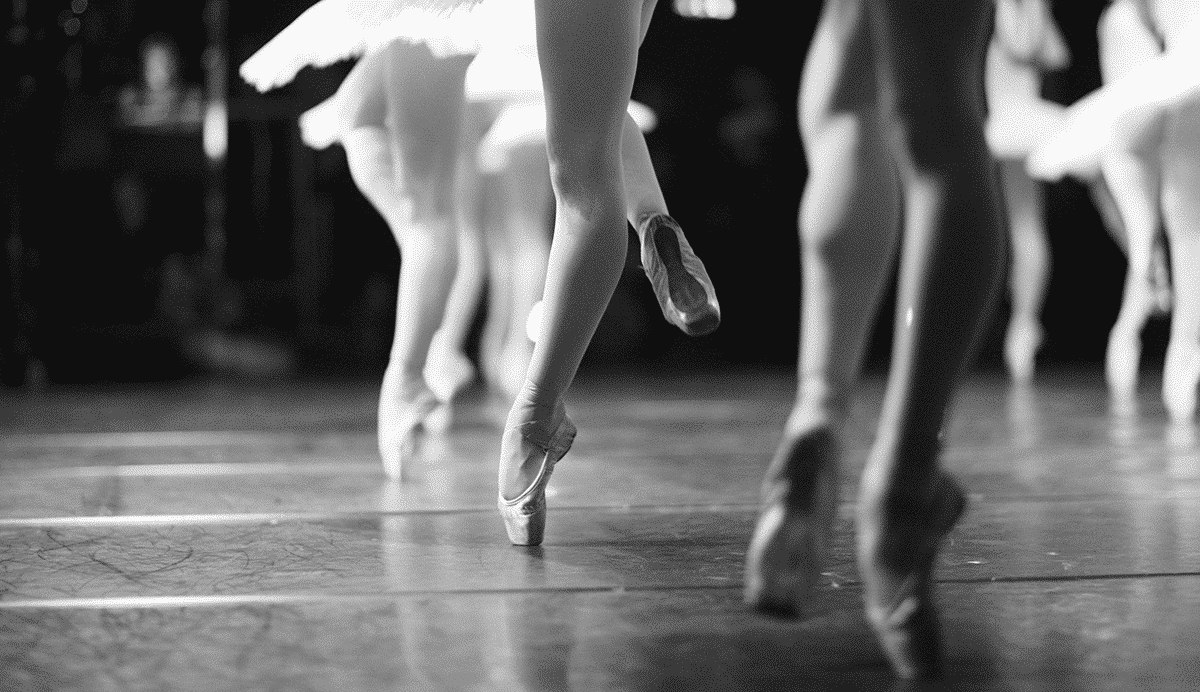From ballet slippers to pointe shoes. Getting the all-clear to dance ‘en pointe’ is one of the biggest rites of passage for young dancers. While it is an exciting time, it is also important to ensure the dancers are 100% ready to progress onto pointe. Graduating to pointe technique is not just something that happens overnight. Let’s run through what it takes to begin pointe work, what a pre-pointe assessment is, and how a physical therapist can help you get to that next step in your dance career.
What is pointe technique?
First and foremost, pointe technique is when a classical ballet dancer takes their entire bodyweight through the tips of their toes while wearing pointe shoes. While dancing in regular ballet slippers increases the forces placed on the foot by four times the dancer’s body weight, dancing in pointe shoes increases these forces by 12 times the body weight.1 That’s a pretty significant difference, which is why it is so important to be fully ready to dance on pointe! Luckily, pre-pointe assessments from a physical therapist who specializes in working with dancers can help you determine whether or not you are in the clear.
When is it safe to begin pointe?
A pre-pointe assessment allows a physical therapist to determine if dancers are truly ready to begin pointe work. This formal assessment also serves as a safety measure that aids in the prevention of injuries. Every dancer is unique, so the age varies on when to begin pointe, but it is typical to start around 12 to 13 years old. This is when the growth plates in the foot bones begin to harden, and motor control is adequate to handle the forces and strain associated with pointe work. With this, there is less of a chance of disturbing the growth plates and creating long-term damage to the feet. 2
The whole process is a valuable way of measuring whether or not each dancer is ready for pointe technique while also allowing them to learn where improvements need to be made. Dancers will typically be recommended to have their first pre-pointe assessment a year before they are planning to start on pointe. This timeframe allows the dancers to address their strengths and weaknesses, and make the necessary adjustments so that they can be ready when the time comes and continue achieving their dancing goals.
In order to determine pointe readiness several factors should be assessed including age, anatomy, technique, flexibility, strength, postural control, placement, and training. Pointe is not recommended if the dancer has less than 3 years ballet experience, takes ballet less than 2 times per week, or has complicating health issues. Beginning pointe before the dancer is ready can increase the risk of ankle sprains, hallux valgus, hallux rigidis, flexor hallucis longus tendonitis, posterior impingement syndrome, Lisfranc injuries, and other stress fractures. 3 Therefore, having a formal pointe readiness assessment completed by a physical therapist with experience in working with dancers is ideal in keeping a dancer safe from unnecessary injury.
What happens during a pre-pointe assessment? 
To test whether or not the dancer is ready for pointe, a physical therapist will look at factors such as:
- Classical ballet technique
- Foot and ankle flexibility
- Strength
- Postural control
- Core stability
- Turnout range and strength
- Stage of physical development
- Motor control
- Overall health status
The dancer will be asked a series of questions and then be sent through a variety of tests and measures including the topple test, airplane test, and sauté test. 4 The assessments typically last an hour in length. By the end of it, the dancer will have a solid understanding of what needs to be improved upon for pointe work. 2 It is common for there to be multiple assessments to ensure the dancer is on the right track and fully prepared when the final testing comes along. Your physical therapist will create a unique and individualized home exercise program for you to work on during the downtime between assessments. Before you know it, you’ll be well on your way to purchase your first pair of pointe shoes!
Did you know we provide pre-pointe assessments right here at Spooner? Schedule an appointment today to get one step closer to dancing in pointe!
References
- “Assessing Ballet Pointe Readiness in Young Dancers.” Creative Therapeutics, 30 May 2019, wholept.com/assessing-ballet-pointe-readiness-in-young-dancers/.
- “Dance Pointe Assessment.” Leading Edge Physical Therapy, leadingedgephysicaltherapy.com.au/services/dance-pointe-assessment/.
- Shah, Selina. “Determining a Young Dancer’s Readiness for Dancing on Pointe.” Current Sports Medicine Reports, journals.lww.com/acsm-csmr/fulltext/2009/11000/Determining_a_Young_Dancer_s_Readiness_for_Dancing.8.aspx.
- “Criteria to Begin Pointe Work (13 Point Checklist).” Washington University Orthopedics, www.ortho.wustl.edu/content/Patient-Care/3496/Services/Physical-Medicine-and-Rehabilitation/Performing-Arts-Program/Criteria-for-Pointe-Work.aspx.

